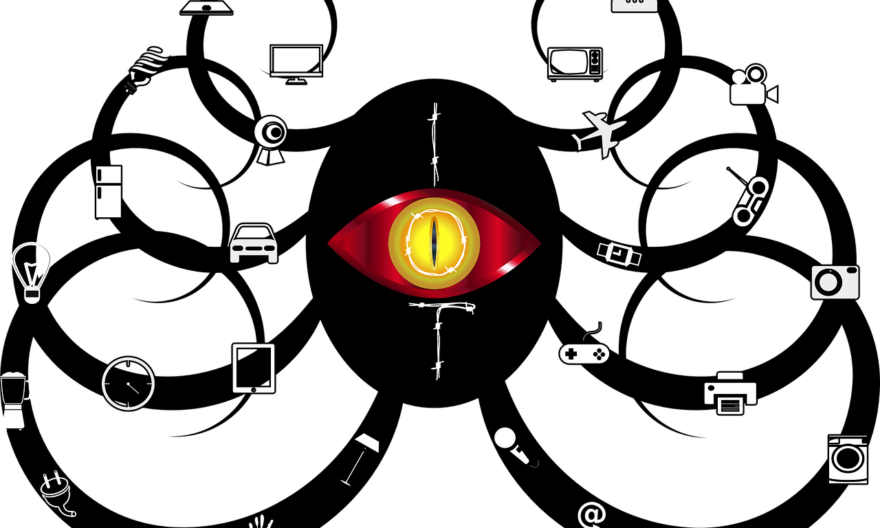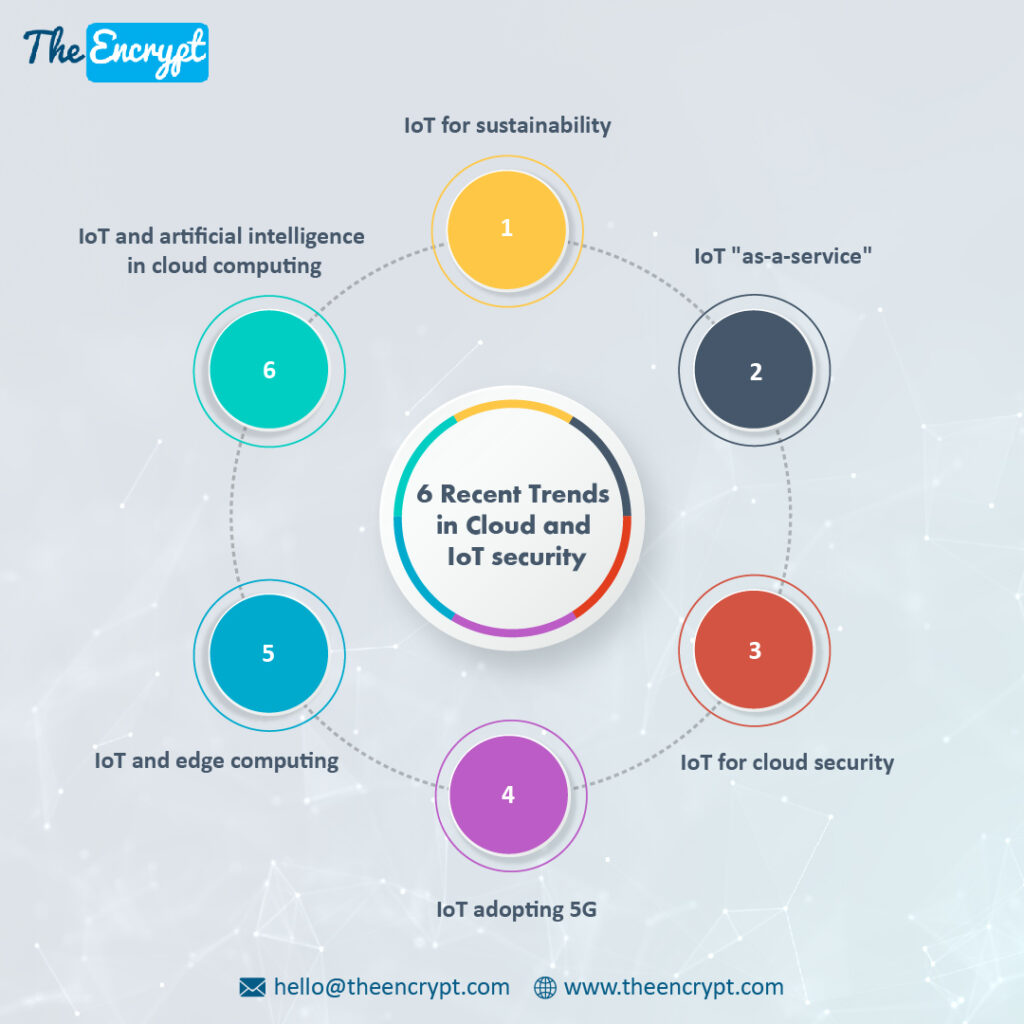
Do you know that 92% of businesses currently host their IT infrastructure in the cloud? Cloud adoption accompanied the rise in remote working after the COVID-19 epidemic. It became a feasible choice for companies worldwide thanks to increased flexibility, productivity, and cost savings. Artificial intelligence and data analytics applications are now used with it.
The Internet Of Things is making the talk everywhere. The internet is evolving and advancing to become a part of our lives. The Internet of things is one exclusive discovery showcasing the advancement of the internet. IoT is now considered the most eventful futuristic technology. It has become a reality that is doing wonders in both social and technical aspects.
IoT in Today’s Time
According to recent studies, it is found that the IoT market had an elevated value of $1.1 trillion in 2020, and by 2026, it is expected to rise to the value of $6 trillion. IoT’s compound annual growth rate has been more than 32% between 2021 and 2026. This drastic growth should not even come as a surprise because very recent research by Microsoft has revealed that by the end of 2021, 94% of companies will be utilizing IoT in some capacity.
Cloud in Today’s Time
As the growth of IoT has elevated, the same has been seen for the cloud today. Studies and research have found that the cloud service’s user-end service has nearly touched the numbers of $400 billion by the end of 2021 and $482 billion in the year 2022.
The research has also predicted that the number of public cloud expenditures will touch the margin of 45% of all enterprise IT costs from less than 17% in 2021.
Though many factors come into play that affects the Internet Of Things IoT and cloud service, the connection between both cloud and IoT technology is inevitable. The availability of fast, dependable connection speeds must be expanded to extract value from the data being collected by IoT devices. Over direct remote network connections, the cloud offers greater reach, lower latency, and more IoT-based services outside parties offer.
Let’s see a few contemporary trends in the Cloud and Internet Of Things security.

Top 6 Trends in the Cloud and Internet Of Things Security
#1. IoT; a crucial technology for sustainability
The IoT has proven useful in crucial disciplines like environmental monitoring, land management, and energy optimization. Since these fields’ demand and business value is little revealed, most business owners overlook them.
However, the world is focusing on factors like a green economy and climate change mitigation; the IoT has now gotten a potential role.
The IoT community needs to direct its potential toward emphasizing how IoT may be incorporated into any workable model of a sustainable global economy.
Libelium is the most popular IoT application in the field of environmental monitoring. In terrestrial management, other applications include Dryad Networks, Kerlink, and NetOp for managing fires and Opti for managing floods.
#2. IoT Insights “As-A-Service” using the cloud
As per the market research, the global “as-a-service” market (XaaS) has been predicted to achieve a growth of nearly 40% per year from the base year 2016 till the year 2020. IoT as a service is a fresh concept for customers, effectively building a framework of other as-a-service models.
There are wireless microcontroller (MCU) devices employed by the IoT that have been used to extract the data to transport it to the cloud, which helps in operating a large range of services. Cloud computing helps get insights into IoT in real-time from any place.
#3. IoT focus on Cloud Security
Since we know that the entire landscape of the IoT hugely relies on the internet or open network, and that is a matter of concern for most users. The main risk factor is hackers and data thieves that are ready to attack the vulnerabilities of IoT. But to regulate this, the IoT community has devised the idea of encrypting the data with the cloud.
The encryption of the data of IoT on the cloud ensures that the data is exposed to encoding only when it is in safe hands and the transit taking place is legal.
Many of the service providers also offer some extended features such as:
1. Azure Security Center (Microsoft) offers an IoT-specific product, Azure IoT, that makes data encryption only in hybrid cloud work environments.
2. Similarly, the AWS security hub by Amazon provides IoT security services designed to reflect the complete picture of an organization’s security posture. This platform also uses the cloud to encrypt the data accessed only through the cloud.
3. Google-sponsored Cloud Security Command Center focusing on data encryption helps identify security malfunctionings.
#4. IoT Cloud uses adopting 5G
IoT service accessible through the cloud is a technology that works on the internet; therefore, the speed and bandwidth of the internet make the IoT service reliable and extraordinary. Therefore, the IoT community is heading towards more intact and swift networking and thus adopting 5G. It has been noticed that by 2021, around 692 million global 5G connections will be registered. The growing demand for IoT in every field is another reason for rapid adoption. Not only this, but 5G is also erasing the gap in the rural or local regions opening gates for new industries to spread and enhance their IoT services.
#5. IoT and Edge computing
The adoption of 5G and the cloud work efficiently for IoT as long as it handles a small amount of data. As soon as the IoT deals with enormous amounts of data, the IoT community needs to take the help of some other platform. In that case, edge computing comes into play. Though the IoT handles and operates huge amounts of data, having data processing capability, it gets deprived of many benefits of data analysis.
Edge computing also provides for distributed networking. The distributed networking makes it work in parallel with the cloud data depositories cutting the time short and increasing the speed of data processing. The players in the market are expecting more expansion of edge computing as well as the customer’s adaptation to IoT technologies.
#6. IoT and Artificial Intelligence in Cloud Computing
The discovery of cloud computing has worked in favor of artificial intelligence. It has also enabled users to access powerful machine learning (ML) platforms that demand immense processing power and data bandwidth. For instance, the user to self-regulate the data processing and streamline the supply chain uses machine learning to learn the IoT-gathered data.
This is a very small glimpse of what cloud computing can do in IoT and AI. Cloud computing has made it possible to virtually access any AI application and employ it using the cloud.
FAQs
Q. What is the difference between IoT and Cloud Computing?
A. IoT refers to controlling the devices connected through the internet, whereas cloud computing provides users to perform computing tasks using services provided over the Internet.
Q. How cloud computing impacts the IoT?
A. Cloud computing acts as a catalyst for the IoT. IoT and cloud computing offers a wide range of connectivity choices, reflecting extensive network access.
Q. How does the IoT process the data?
A. IoT using edge computing processes the data and responses in real time.
Q. How do vendors charge for cloud services?
A. The vendors use the Pay as you Go, or “PAYG” model, which refers to paying only for the services you use and ceasing them when you are done.
Q. What is IIoT?
A. It stands for Industrial IoT. Manufacturing industries use this to tackle industrial challenges.
Conclusion
The Internet Of Things is a boon for science and technology. IoT has made security and functioning easy for residences and industries. It has also shown its valuable role in managing real-time challenges such as climate change, green economy, and sustainable development. True that every passing day is coming up with threats; thus, the IoT community and service providers also need to come up with robust safety measures.
